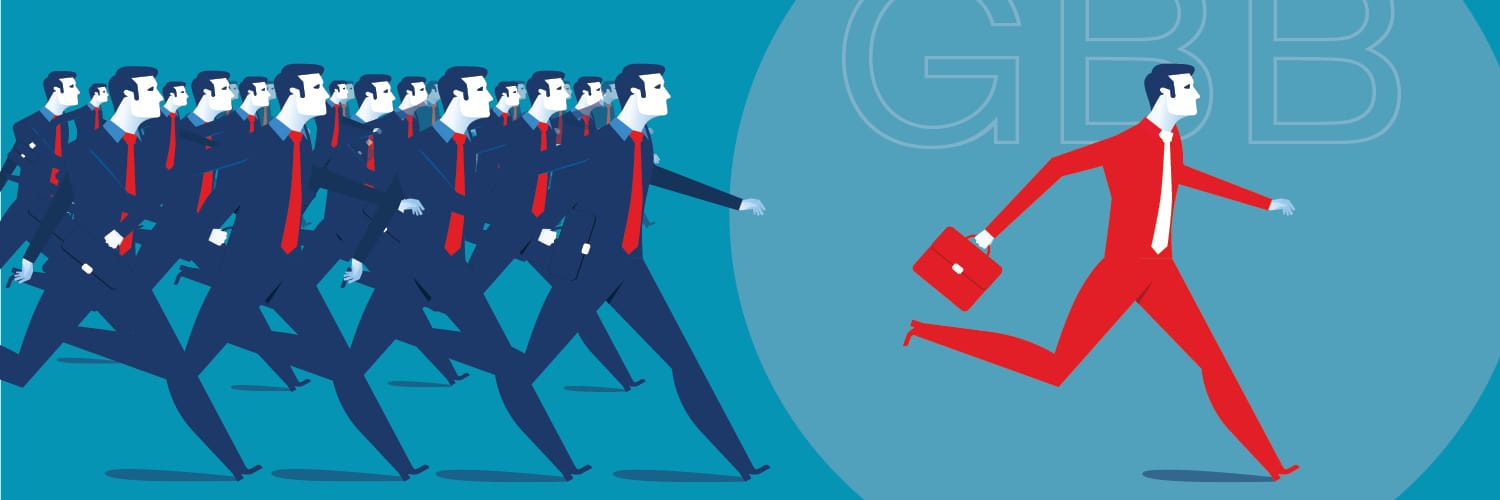“G-B-B is a strategy every company should consider. I routinely see it used to simultaneously attract high-spending customers and price-conscious ones, dramatically boosting revenue and profit.”
For decades, the SEN Design Group has been advocating and teaching the intrinsic value of the Good-Better-Best (G-B-B) selling model. Many, but not all, of the members have embraced it and are successfully leveraging the concept to greater revenue levels.
In a Harvard Business Review article, a prominent business consultant has expanded on the value of this pricing strategy. Kitchen and bath owners who haven’t adopted this methodology are missing the incredible opportunity to stand apart from, and zoom ahead of, their toughest competition.
G-B-B is much easier to implement and adopt today with the availability of DesignAlign technology and its built-in setup wizards. While business may be booming for you today, it may not be tomorrow unless you shift to the G-B-B selling model. You ought to gain mastery of this brilliant, easy-to-use concept before your competitors do.
Firm owners are not generating enough revenue from their projects
Kitchen and bath firm owners who are busy running projects, from the initial contact with a prospect to substantial completion, are not earning the profit they could be by a wide margin. The primary reason for this is a matter of habit rather than ability.
They price jobs based upon perceived local market rate standards instead of by their overhead business model, which puts a kink in an owner netting a really good profit. They typically do not take cash discounts from suppliers, forfeiting their chances of earning a typical 36% return.
Most do not have 12 months of fixed expenses in a liquid investment portfolio to be recession-ready; they apparently are too busy with their daily operations to change how they do business. As a result, most owners are undervaluing their jobs by as much as 15% – 20%, potential profit they could be leveraging to expand their operations by planting satellite showrooms.
Collaboration creates genuine value and higher profits
Over the years, we have seen that consumers of kitchen and bath remodeling projects want an interactive, transparent process where they see and understand the incremental costs involved. Studies have found that when consumers are interactively involved in such an educational process, they will make a more significant investment in it emotionally, and therefore, be willing to spend more money on their purchase.
When SEN Design Group owner, Ken Peterson CKD, began developing kitchen project budgets for prospects in 1976 after thorough interviews, and transparently including them in this process before any formal design work had commenced, he started getting retained for jobs in half the time. This significant change in his selling process enabled him to charge 50% more per job, increasing his gross profit margin from 35% to 51.5%.
Now you would have thought Peterson’s sales would have gone down with such a substantial price increase. But they didn’t. They actually doubled! Why? Because prospects experienced genuine value with this newly instituted collaboration.
Good-Better-Best is the best pricing strategy
Consumers like choice, but not too much choice.
Good-Better-Best pricing tiers eliminate the “buy or don’t buy” mentality that prospects often adopt while they are looking to make a purchase. The three-tiered pricing structure of Good-Better-Best actually gives the prospect a sense of empowerment.
A Harvard study revealed the Better option is the most widely selected of the three choices, pushing up the potential for greater profit.
When consumers are presented with three options to choose from, most of them will select the middle option. A common estimate across firms of any industry employing G-B-B is that 10% to 20% of consumer purchases will be from the Good option, while 25% to 50% will be from Better and 30% to 60% from Best.
When consumers know the pricing, and the reason for a product’s price at every step along the way, they will be more deeply invested in their project. They will not mind spending more money for the value they are getting with the experience!
Besides that benefit, both parties stand to save a ton of time!
The methods behind your G-B-B model
There are three modes to put to work in G-B-B implementation to make sure your tier structure is really the right one for your products and services.
Offensive plays. A G-B-B pricing strategy is aimed at increasing revenue.
Defensive plays. Counter prices of firms who introduce a service or product with the lowest prices on the market. This is an assist against losing sales to the “box” stores.
Behavioral plays. Make moves that draw on the psychology of consumers in their given market.
Keep these three maneuvers in mind as you develop your Good-Better-Best price tiers.
Creating your G-B-B model
Decide how many offerings to create. Three are typically given, one for each tier. SEN recommends representing three quality cabinet brands. While the local market will have an impact on your decision, having multiple products occupying a space within each category could be right for your firm; for instance, nine cabinet brand/model options might be the right fit, three populating each tier.
Pick the features you’ll include. Decide the attribute that makes your best product the Best product. What separates it from your Better options? Each tier should be represented by product with basically the same positive qualities so that they are distinguished from the other categories.
Determine your fence attributes. Decide what product will represent your Best category and determine the type of consumer who will be interested in purchasing this product.
Ask yourself some questions to determine what your fence will be:
- How broad is the appeal?
- Are middle-choice consumers going to be enticed by product in this category to the point of making their selection from it?
- Are the features that make it the Best option enough to separate it from the Better option?
- What, if anything, about the Best features entices a consumer from selecting a less expensive offering?
- Would adding or subtracting them from the Best option affect the cost of creating the product?
Conduct a cost-benefit analysis. It’s essential to be certain of the prices by which you set your products and that their separation is consistent, truly reflecting sound reasoning. Rafi Mohammad, the founder of Culture of Profit and contributor to the Harvard Business Review, recommends the Good price not be more than 25% less than the Better price, and the Best price should not exceed 50% more than the Better price.
Three conceptual key points to the G-B-B strategy
- Start with the Best. Start with the most expensive or Best package, and work back to your Good offering.
- Think DELTA. You want each component of your tier structure to make a sound point regarding their pricing and the attributes of each offering. The prices you set for them should create a logical separation in pricing differences that demonstrate clear reasoning the consumer can readily understand. The attributes of each offering should be reflected in its price, and no more than four product features should differ between the offerings.
- Show your prospects through your product displays how their world is going to look and feel to them, once they have them in their home.
WINS all around—leverage bigger contracts in less time
With a well-thought-out G-B-B selling platform in play and some combination of SEN and in-house training, your designers will price and sell double the number of jobs almost immediately after implementing it.
Expand with satellite showrooms. With all of your designers operating within the structure of a G-B-B selling platform, you can leverage economies of scale, as it will be easier with all of your designers working within a single framework. If everyone on a design team is disciplined to follow the same proven sales process, consumers will be assured of having the same superior collaborative experience, regardless of which designer they engage or which showroom location they enter.
Vendor sales grow faster. Vendors who service and support businesses using a standardized sales process become its direct beneficiaries. In the short term, their product sales will grow faster than from other accounts in their customer lineup.
By having their products mounted on a single technology platform like DesignAlign, vendors make it incredibly easy for designers to specify and sell their products. It’s a good reason for owners and sales designers to push for their favorite brands to be accessible there.
Profitable increase is in efficiency and productivity
In recent years, companies as diverse as All State Insurance, ESPN, Southwestern Airlines, and The Metropolitan Museum of Art have implemented Good-Better-Best pricing systems into their operational agendas, although it has yet to explode in use in the kitchen and bath industry. This is a shame because companies could be doubling their number of retainers in half the time and having an easier time doing it.
Today the Good-Better-Best process is embedded as the centerpiece of the new, industry-specific management software. Adopting DesignAlign team-wide is much easier than many imagine. As everyone is extra busy these days with Covid-demand work, DesignAlign will be a welcomed solution that improves team efficiency and productivity.
The consumer demand for G-B-B is out there. Leveraging it will put your company on a glide path to becoming an engine for wealth.
—SEN Design Group, Leadership Team


